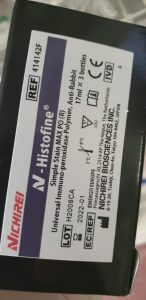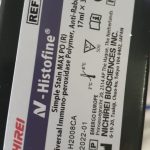The regulation of cerebrovascular permeability is vital for regular mind homeostasis, and the “breakdown” of the blood-brain barrier (BBB) is related to the improvement of vasogenic edema and intracranial hypertension in a quantity of neurological problems. In this examine we exhibit that a rise in endogenous tissue-type plasminogen activator (tPA) exercise in the perivascular tissue following cerebral ischemia induces opening of the BBB via a mechanism that’s impartial of each plasminogen (Plg) and MMP-9. We additionally present that injection of tPA into the cerebrospinal fluid in the absence of ischemia ends in a fast dose-dependent improve in vascular permeability. This exercise just isn’t seen with urokinase-type Plg activator (uPA) however is induced in Plg-/- mice, confirming that the impact is Plg-independent. However, the exercise is blocked by antibodies to the LDL receptor-related protein (LRP) and by the LRP antagonist, receptor-associated protein (RAP), suggesting a receptor-mediated course of. Together these research exhibit that tPA is each essential and enough to immediately improve vascular permeability in the early phases of BBB opening, and recommend that this happens by a receptor-mediated cell signaling occasion and never by generalized degradation of the vascular basement membrane.
Focal cerebral ischaemia and post-ischaemic reperfusion trigger cerebral capillary dysfunction, leading to oedema formation and haemorrhagic conversion. There are substantial gaps in understanding the pathophysiology, particularly relating to early molecular members. Here, we overview physiological and molecular mechanisms concerned. We reaffirm the central function of Starling’s precept, which states that oedema formation is set by the driving drive and the capillary “permeability pore”. We emphasise that the motion of fluids is essentially pushed with out new expenditure of vitality by the ischaemic mind. We organise the progressive adjustments in osmotic and hydrostatic conductivity of irregular capillaries into three phases: formation of ionic oedema, formation of vasogenic oedema, and catastrophic failure with haemorrhagic conversion. We recommend a brand new concept suggesting that ischaemia-induced capillary dysfunction will be attributed to de novo synthesis of a particular ensemble of proteins that decide osmotic and hydraulic conductivity in Starling’s equation, and whose expression is pushed by a definite transcriptional program.
Clinical spectrum of reversible posterior leukoencephalopathy syndrome.
We recognized 38 episodes of RPLS in 36 sufferers (20 females and 16 males) with a imply age of 44.7 years. Comorbid circumstances included hypertension (53%), renal illness (45%), dialysis dependency (21%), malignancy (32%), and transplantation (24%). Presenting signs included medical seizures (87%), encephalopathy (92%), visible signs (39%), and headache (53%). Mean peak systolic blood stress at presentation was 187 mm Hg. Clinical signs resolved after a imply of 5.three days. Atypical neuroimaging options included important frontal involvement in 22 episodes (58%), grey matter lesions in 16 (42%), unilateral lesions in 2 (5%), hemorrhage in 2 (5%), recurrent RPLS in 2 (5%), confluent lesions in 2 (5%), and foci of everlasting harm in 10 (26%). Twenty-two episodes (58%) had brainstem/cerebellar involvement on neuroimaging.

